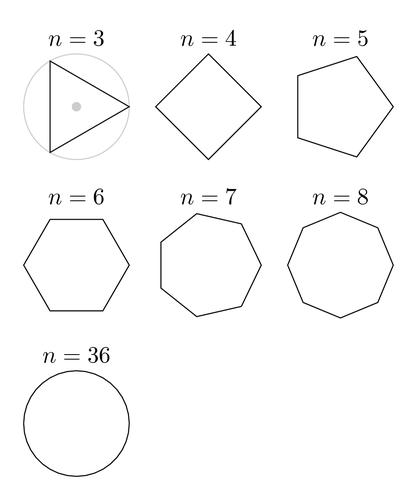Regular polygon area to perimeter ratio!

For any regular polygon of sides: , where is the area of the polygon, , the perimeter of the polygon, and , the distance between the polygon center and any vertex.
What is the value of ?
The answer is 3.
This section requires Javascript.
You are seeing this because something didn't load right. We suggest you, (a) try
refreshing the page, (b) enabling javascript if it is disabled on your browser and,
finally, (c)
loading the
non-javascript version of this page
. We're sorry about the hassle.
Then, the area of the polygon A is n times the area of the triangle A △ or A = n A △ = n R 2 sin n π cos n π .
The perimeter of the polygon P = 2 n R sin n π .
Therefore, P A = 2 n R sin n π n R 2 sin n π cos n π = 2 R cos n π . Then k + m = 1 + 2 = 3 .